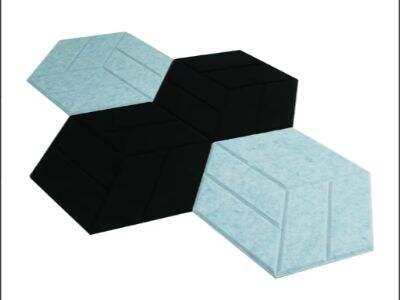When it comes to picking the wood for acoustic panels, consider how well the wood can absorb sound and how long it will last. The most commonly used woods for guitar bodies are pine, oak, and walnut, each of which has different wood properties that affect their performance in acoustic applications. We JIANG FEN BEI (Hongkong) International Wood board CO., LTD is concentrated on high-quality wood board. Know the difference between these woods, can help you get the best acoustic panels soundproof option for your job.
An acoustic examination on pine, oak and wall nut paneling
Pine is a light softwood which is easy to work with. They absorb sound naturally well which is great for noise control within a room. And oak is a hardwood. It is denser than pine, so it can absorb more sound waves. This is why oak panels are great for rooms that must control substantial noise. Walnut is another hardwood with a rich dark color and durability. It is an excellent sound absorber, however, and is typically more expensive than oak and pine.
What kind of wood stands the test of time?
Hardwoods are usually more durable than softwoods, such as pine. Oak panels are durable and can withstand a good deal of use without the consequences of damage. Like oak, walnut is also a durable choice, but with the advantage of being less likely to fade with age. The wood used is not as hard as oak or walnut, so pine is a better option for those being budget conscious.
A comparison of sound-absorption performance
On the sound-absorption front, all woods have their advantages. Pine is a softer wood and can quickly absorb the sound waves, which makes it ideal for anywhere echo reduction is important. Its density enables oak to control sound in very loud spaces, such as concert halls or recording studios. JIANG FEN BEI acoustic sound proof panels which gives just the right amount of sound absorption but in addition adds that aesthetically pleasing aspect to the darker walnut hue.
Knowing you wood – What to look for in wood for acoustic panels?
Each wood has something different to offer the table. Pine can be unpainted or painted easily to match decor, while still maintaining sound absorption. Oak is very strong and durable so it is suitable for high-traffic areas where panels need to be able to handle a lot of use. The walnut has a luxurious appearance in addition to its acoustical capabilities that are very often desired in whatever setting where the look is just as important as the function.
A side by side of pine, oak and walnut
In summary, this is what each wood material brings to the table as far as performance of acoustic panels is concerned. Pine is cheap and good for sound absorption, but not especially long-lasting. Oak: Oak is a great choice for high-noise locations since it is so dense and durable. Walnut, although generally more expensive, is the most aesthetically pleasing and has excellent wearing qualities. Choosing Acoustic Panels Wood: The type of wood you choose for JIANG FEN BEI acoustic sound panels will depend on a number of factors, including: Budget Durability Aesthetic preferences.

